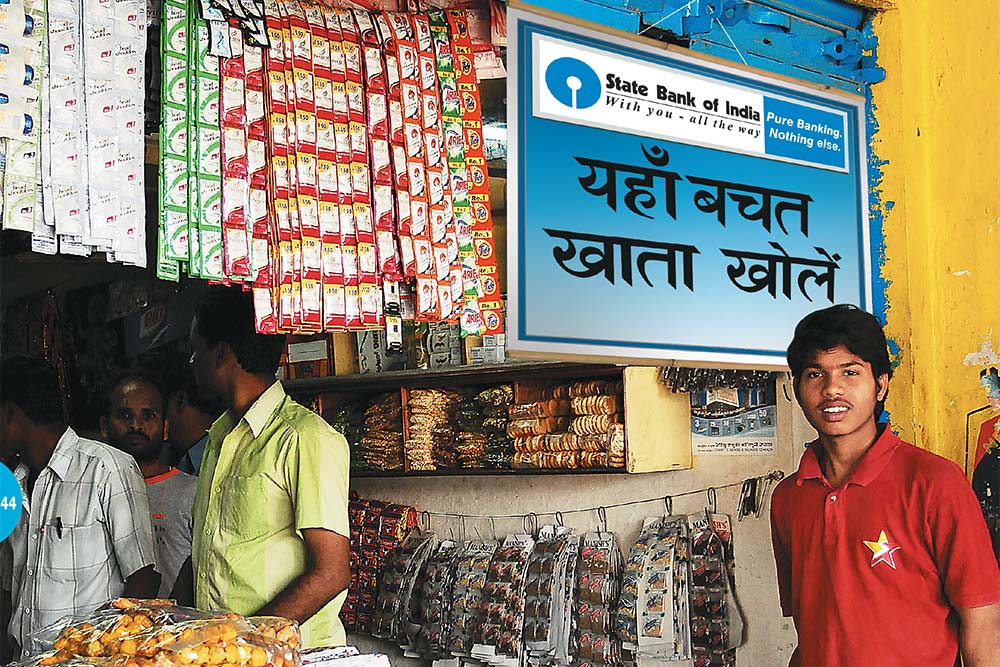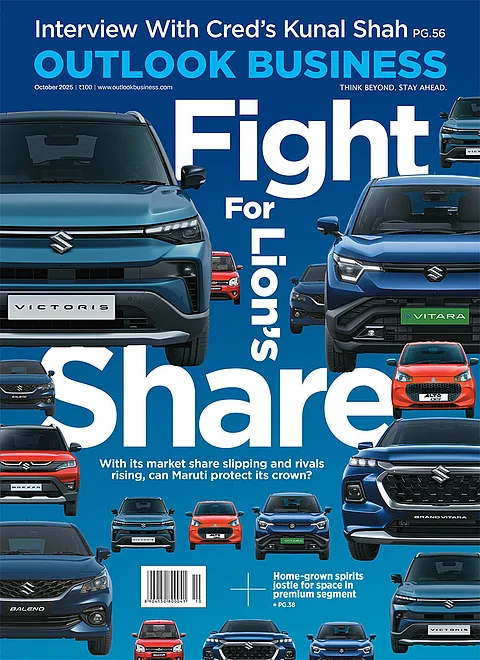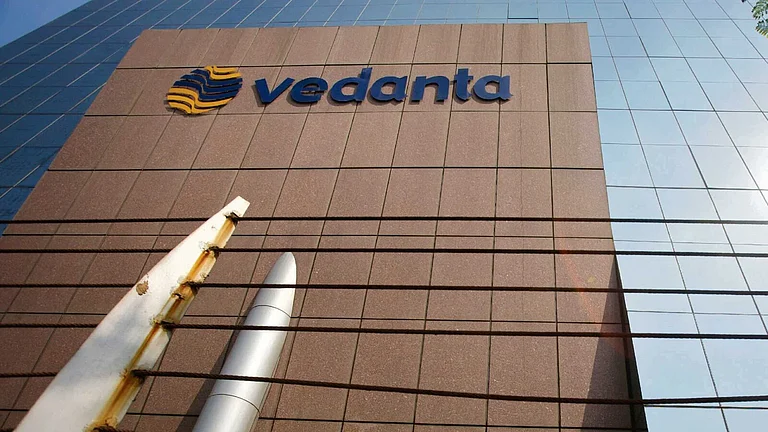When Bharat Petroleum Corp (BPCL) decided to strengthen its relationship with the short-distance commercial vehicle community that accounts for nearly 40% of its retail diesel trade, it didn’t offer them free tune-ups or reward points. Instead, the oil company decided to open bank accounts for truck drivers who bought fuel at its outlets. So, when Sant Ram Pal, a 33-year-old trucker came for a refill to the BPCL outlet on NH86, en route to Kanpur, the outlet’s owner held out a micro-ATM and offered to open a Corporation Bank savings account for him. On his next fuel stop, he will be offered microcredit, micropension or even insurance deals. “Earlier, I kept my money with the paanwallah. This is more convenient and besides, I know these people since I stop here for fuel frequently,” says Pal.
Twelve dealers across India now offer banking services in association with Corporation Bank. There has been virtually no incremental cost for BPCL since the bank has invested in the handheld devices and smart cards and the outlet owner or employee acts as the bank’s retail agent. Some 8,000 accounts have already been opened, with average account balances of ₹1,000-1,500. “Retail outlets are happy to receive banking customers as they bring in more business once they are converted into regular customers,” says Monica Widhani, general manager, urban retailing, BPCL.
Some 1,700 km south, Shivkanta Gowda looks forward to the Shakti Amma’s visit not for the chance to buy biscuits, soap and toothpaste alone. The Hindustan Unilever (HUL) representative also collects money that Gowda has saved from her earnings as a vegetable vendor and deposits it for her in a no-frills State Bank of India (SBI) account. Gowda has a smart card with her photo on it that records all transactions through the small handheld device the Amma carries.
Since last year, about a dozen Shakti Ammas have opened nearly 1,000 no-frills accounts for SBI in Maharashtra and Karnataka. Each of HUL’s 43,000 Shakti Ammas is expected to open at least 70 accounts, so SBI is potentially looking at 3 million new rural accounts in the next few years. “Such accounts could cost us a fraction of what it takes to operate a branch and the agent makes money with the commission we pay. It is a good system,” says Jayanta K Sinha, chief general manager, rural banking, SBI.
What are HUL and BPCL doing, opening bank accounts and accepting deposits? They are ‘business correspondents’ (BCs) for various Indian banks, helping reach financial services to the deepest interiors. For years, the RBI has tried to get banks to open branches and reach out to people in India’s 600,000 villages but to little avail — it’s just too cumbersome and expensive.
Then in 2010, it extended the definition of BC to include for-profit organisations, and banks quickly made alliances with companies from diverse industries — from consumer goods to telecom and oil companies to agri service providers — that would give them unprecedented access to the unbanked millions. Now, individual agents from these companies double up as retail agents for banks, and use hand-held micro-ATMs to open accounts, collect deposits and hand out withdrawals on the bank’s behalf.
For banks, the push into rural India is an obligation that has to be met — and one they’re not fulfilling too well at present. There are just under 90,000 BCs at present against a target of covering 223,473 villages through 197,494 BCs in FY12. The target for the next year is even more ambitious (see: Miles to go). Corporate partnerships, then, are the most efficient way of getting where they want to, especially since pure-play BC companies have fewer points of sale than companies such as HUL and ITC. For such companies, which are in any case making huge investments in building their rural presence, the association with banks helps create recall with consumers in villages as well as urban centres (from where migrant workers remit funds). It’s an unlikely partnership. But can it turn out to be a win-win for all involved?
Seeking distribution muscle
In the past 15 months or so, several banks have inked BC deals with large corporates: SBI, for instance, is being partnered by HUL and ITC, Axis Bank by Idea Cellular, Union Bank and Yes Bank by Nokia Stores and Corporation Bank by BPCL (see: Partners in progress). Meanwhile, a joint venture between SBI and Airtel has been called off, although reports say the mobile operator will stay on as a BC for the nationalised bank.
The biggest draw for banks is the distribution muscle of their new partners. A case in point is SBI’s impending deal with ITC, where a business correspondent channel will be implemented in close to 30,000 villages across Uttar Pradesh, Rajasthan, Maharashtra and Madhya Pradesh through 5,000 e-choupals. ITC’s choupals already have a kiosk with an internet-enabled computer and a person trained to use it; all SBI needs to do is upload its software on these machines. “If this model succeeds for both partners, the possibilities are immense. Even ITC’s FMCG network around the country could be a potential vehicle in the future,” says S Sivakumar, CEO, ITC agri business.
That would be multiple times the reach banks have managed so far. In addition to the banks’ own networks, for the past five years, pure-play BC companies such as Fino, Eko and Oxigen have been helping in training, managing and monitoring BCs. But their operations are still limited: Fino is India’s largest BC company, with 21,500 terminals in 397 districts, and Eko has just 1,500 agents.
Apart from volumes, there’s a clear cost advantage in signing up with corporates. For most Indian banks, the biggest deterrent in expanding rural operations is the high cost of reaching and servicing customers. For instance, for each rural branch, SBI shells out ₹20-25 lakh in fixed cost and an additional ₹10-15 lakh a year in running expenses. Each transaction costs the bank about ₹50. For private banks, those numbers may be even higher. In comparison, a BC’s transaction cost is around ₹200 a year. The biometric equipment for issuing smart cards costs about ₹25,000, while an internet kiosk could cost a bank up to ₹1 lakh. Banks usually pay BCs ₹25 per account opening and a commission of 2-4% per transaction.
Sometimes, they fork out an additional monthly fee of up to ₹3,000 if transaction frequency isn’t adequate. With for-profit companies, those costs could come down even more, since, in many cases, companies’ IT systems already extend till the last mile. “This is the cheapest option we have currently,” agrees Rahul Bhagat, HDFC Bank’s country head for retail liabilities, marketing and direct marketing channels. “That’s why any company that has the distribution strength to reach out is a potential BC partner.”
There’s another advantage in tying up with a corporate BC: hedging of fraud-related risks, both financial and, perhaps more important, reputational. At present, individual BCs are allowed to retain overnight deposits of up to ₹20,000, so the risk of fraud and embezzlement is high. “By tying up with corporate BCs, there is an additional layer of accountability between us and the account holder,” points out AP Ghughal, general manager, Bank of India.
The Corporate connection
What’s in it for the companies? Not the money, certainly — at least, not right away. For telecom and consumer goods companies, rural India is the next big frontier and they’re investing time and money in nurturing this market. Even though companies agree that it will be four or five years before they see serious money coming through their BC partnerships, they will still be receiving account opening and transaction fees, much like the pure-play BCs.
Consider Nokia. The mobile company has over 200,000 retail outlets, of which 40% (80,000) are in rural areas. In 2010, it tied up with Yes Bank and Union Bank of India to act as their BC, and has signed up about 130 vendors already. Using the Nokia money app, money transfers, deposits and withdrawals can be made from these registered Nokia BC stores. The services will be rolled out nation-wide over the next 18 months. “We have made the bulk of the investment in setting up our stores. With banking offerings, we can leverage that investment. Besides, it will help build brand recall in rural areas,” says Gary Singh, general manager, Nokia Money.
A stronger brand presence and improved customer relationships are the biggest draw for companies. Consumer product companies, especially, which hire on-ground agents to sell their products report that fatigue sets in early for agents and it is difficult to motivate them to keep making the rounds of dirt-poor villages hoping to make a sale. The added incentive of earning a commission — however small — on banking transactions may well make a difference. It’s a similar story for telecom operators as well. With mobile number portability, it’s all too easy for subscribers to switch operators, so a company store selling recharge vouchers may have no customers at all if they decide to go elsewhere.
It is such worries that led Vodafone to sign on as a BC for HDFC Bank late last year. Now, some 320 villages across Rajasthan are being serviced through 2,200 Vodafone retailers. “Imagine the kind of customer loyalty it will inspire in a rural woman when her mobile connection fetches her money from her city-based son,” says Sunil Sood, chief operating officer, Vodafone.
The monetary rewards will come in too slowly and what corporates are getting are subtler benefits in terms of brand building and customer retention. Is that enough to keep corporates interested in BC partnerships? Not as things are. At present, average balance in no-frill accounts is around ₹1,300-1,500 and many of them are dormant. For the BC partnership to be viable, both the transaction frequency as well as the average balance needs to increase, so that agents earn decent commissions.
There are other issues too. Currently, the micro-ATMs, which cost between ₹15,000 and ₹25,000 a piece, are mostly provided by banks to their corporate BC partners. In pure-play BCs, the machine is funded by individual agents and their earnings are a mix of fixed income and commission. If the corporate BC model is to switch to that, the cost of the device needs to come down drastically; otherwise, it will be difficult to keep agents motivated. Handling of cash is also an issue. “The BC has to travel to the branch to deposit cash when it exceeds the ₹20,000 limit. We need to examine the cost of making this journey,” points out ITC’s Sivakumar. Clearly, the for-profit BC partnership will be sustainable only if companies and their agents see tangible benefits from
the alliance.












 Just one email a week
Just one email a week